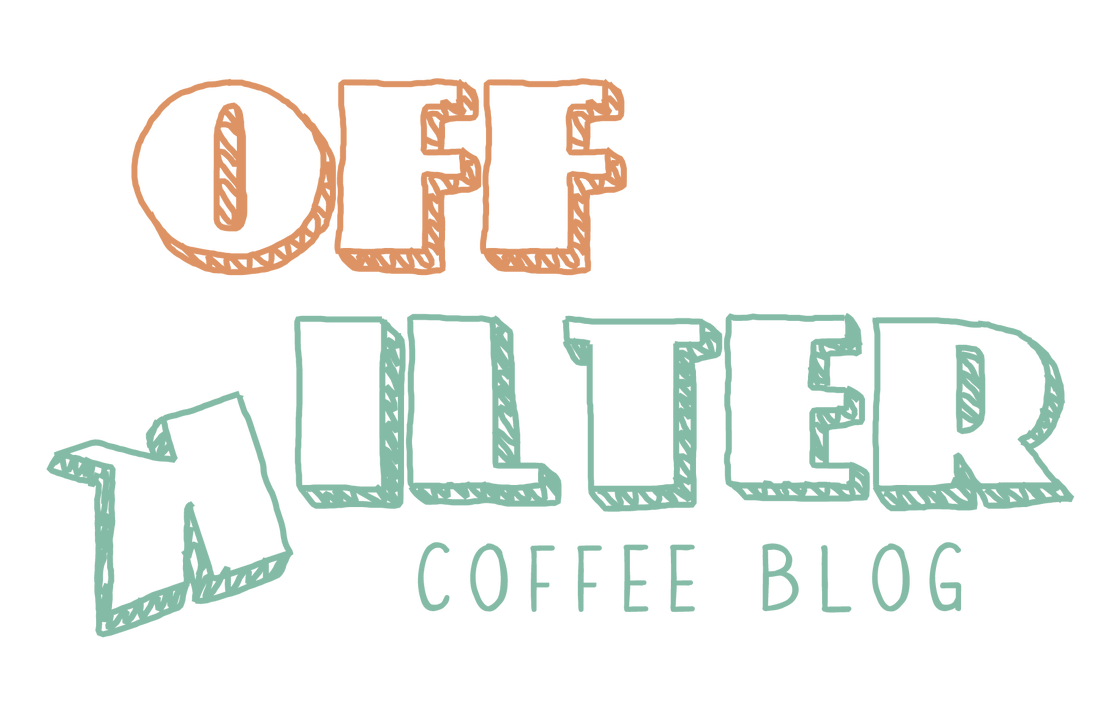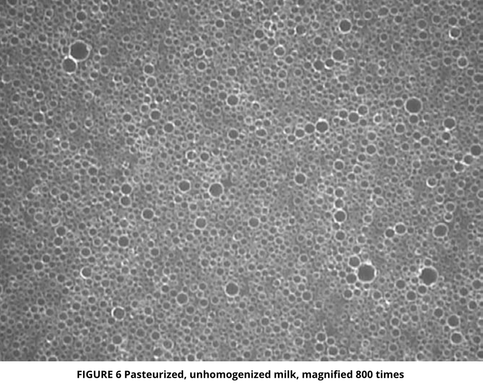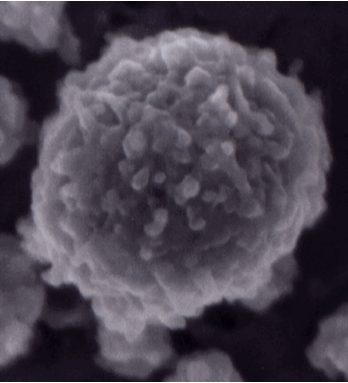GOT (CREAMTOP) MILK?
6/12/2018
by Jon CluttonAt The Wild Way, we like to take the road less traveled. And sometimes, we mean that quite literally. That's why we drive out to De Soto every Wednesday to pick up our creamtop milk order from this awesome small dairy company out of Junction City, Kansas - Hildebrand Farms. We think their milk is THAT good and throughout the blog I'll get into the science of why. They don't deliver to Kansas City, so we meet them the furthest East they come, De Soto. They are literally the best. Milk For Coffee There are three main components in milk: sugar, protein, and fat. Lactose, is the main type of sugar in milk. It's about 15% as sweet as table sugar. It adds that subtle sweetness to your lattes. You definitely want a high lactose content in your milk. Hildebrand comes in on the high end with about 12g. The majority of protein in milk is casein. Casein groups together in bunches called micelles (remember this for later). You need protein for good lattes. Protein allows for the stabilization of microfoam. Without enough protein, you get very watery lattes and some shady looking latte art. Both the amount of fat and the size of fat globules in milk have an impact on mouthfeel (Chojnicka-Paszun et al., 2011). You don't want too much or too little fat. Too little (fat free) and you lose the creaminess and texture on your tongue. Too much of it (heavy cream) and it blocks receptors on your tongue and consequently your ability to taste the coffee. Similarly, when suspended fat globules are too small, you lose the velvety-rest-on-your-tongue deliciousness. When fat globules are too big, the milk starts to taste heavy. Busting the myth that fat is unhealthyThis is a touchy subject for a lot of people, so I'm going to be careful with it. Because of my autoimmune disease, I dove pretty hard into the nutrition literature this last year, and it's made a big difference for me. I learned so much. At the same time, I understand why health and the fat topic can be a sensitive one, so I will try to approach it carefully and stick to the literature and people much smarter than me. I've included articles by some people that I really trust. What they discuss and what most of the evidence points towards is that we were misled by much of the low-fat advice we were given in the 1990s. Fat is an important and necessary contributor to the diet, especially high-quality fat sources like olive oil, avocado oil, coconut oil, and grass-fed animal fat sources. Fat is important for the absorption of fat-soluble vitamins like vitamins A, D E, and K, many of which Americans are deficient in. I won't dive into things more than that because I'm not a medical professional and more importantly, I don't want to be another lecturing blogger. But, there are some really smart people out there who are working hard on preventing chronic disease through lifestyle change. I've linked their work below. I would strongly suggest reading their stuff, looking at the data, and coming to your own conclusions. When it comes to health, there's a lot there to learn. If you ever just want to have a casual conversation about this stuff, come stop by the trailer on a Saturday. I do research for KU med and one of my passions is empowering people to read, understand, and be confident in research. Books Paleo Principles by Sarah Ballantyne The Case Against Sugar by Gary Taubes. The Big Fat Suprise by Nina Teicholz Blogs What About Fat? - Sarah Ballantyne The Diet-Heart Myth - Chris Kresser Saturated Fat Does a Body Good - Chris Masterjohn Homogenized Somewhere down the road we decided we don't like things to separate. Peanut butter - throw some hydrogen in there (I see you Jiff). Almond milk - let's put some emulsifiers in there. Milk - let's homogenize you. Naturally, fats (hydrophobic elements) and water/sugar (hydrophillic elements) don't like to mix. We all know this. We've seen real peanut butter separate. Without homogenization, milk does the same thing. As you let milk sit, a layer of cream rises to the top (hence creamtop). This layer of cream is what's used to eventually make butter. This layer of cream sits on top of our milk bottles. If you visit us at the trailer, this is why you may see us whisk the top of a new milk bottle or ferociously shake a milk jug before pouring from it. This is the natural way to incorporate the cream and milk. Sometimes, you are lucky and you even get little bits of fresh cream in your iced lattes. Those bits are the best part, so enjoy. Now onto more science. Let's look at milk from a more molecular level. When milk is least processed it has large globules of fat and micelles of casein protein suspended in it. In the image below, you can see the globules of fat. And in the image below that you can see a casein micelle. Casein Micelle The homogenization process breaks down the globules of fat and the micelles of casein to mix everything evenly so that there is no separation between cream and milk. To do this, dairy manufacturers push milk through really small pores at high pressure. This breaks the fat globules and casein micelles down until they have a significantly smaller diameter (Sandra et al., 2004). You can see the impact of homogenization in the image below. Where did all of the tasty fat globules go? Homogenization causes issues for a couple reasons. 1) Taste Issue. In Christine and I's opinion, non-homogenized milk tastes better. It tastes creamier with a better mouthfeel and a velvety texture. The size of the fat globule impacts the mouthfeel of the milk, and as the fat globules shrink in size, you lose some of the texture of the milk (Chojnicka-Paszun et al., 2011). We think that non-homogenized milk tastes more natural, more creamy, and velvetier. Definitely worth trying, if you're up for a little adventure. 2) From a health standpoint, homogenization causes issues for some people. Milk is the second most allergenic food in children (Williams, 2013) and casein has been shown to cause gluten cross-reactivity (Vojdani et al 2013 and Paleo Mom article). Both of these issues are related to leaky gut syndrome. The issue with homogenization is the impact that it has on the casein micelles. Casein is meant to be delivered slowly to the intestine for easy digestion (Argov et al., 2008). However, after homogenization the size of the casein micelles are significantly smaller (Sandra et al., 2004)., effectively exposing more casein protein to the gut more quickly. For those of us with gut-related issues or sensitivities, this can increase inflammation and leaky gut. For some people, this is why milk sits so poorly. Often times it isn't the lactose, but a food sensitivity caused by the increased casein exposure to the gut from homogenization. When Christine was at Cuvee, this is when we first learned about non-homogenized milk. She used a local dairy, Mill-King, from Waco, Texas area at the coffee bar. Mill-King also did not homogenize, and because of that, several of Christine's customers came to Cuvee to get lattes because they considered themselves milk-intolerant to anything other than Mill-King's milk. Milk homogenization has become so mainstream that almost all major dairies homogenization their milk, and even small-scale dairies do as well. That is why it was impossible for Christine to find a dairy that delivered to Kansas City that we could order our milk from weekly. Hence the road less traveled and a 45 minute drive out to De Soto each week. Grass-Fed vs Grain-fedThe data are clear when it comes to grass-fed vs. grain-fed beef - grass-fed are healthier and more nutrient dense (Daley et al., 2010). Grass-fed beef has higher levels of the hard-to-obtain, active form of vitamin A, higher levels of powerful antioxidants and nutrients glutathione and CLA, and a better ratio of omega-3 to omega-6 fatty acids, not to mention a number of other benefits (Daley et al., 2010). Unfortunately there hasn't been nearly as much research done on grass-fed vs. grain-fed milk; however, according to the data that we do have, the nutrient comparisons are very similar. Grass-fed milk is 2-5x higher in CLA, a nutrient linked to a decreased risk for inflammation, cancer, obesity, cardiovascular disease, and diabetes (Dhiman et al., 1999). Grass-fed milk has about a 2-3:1 ratio of omega-6 to omega-3 fatty acids, compared to an 8-40:1 ratio of grain-fed milk (Patel et al., 2013). Omega-3 fatty acids are generally anti-inflammatory, while omega-6 fatty acids are pro-inflammatory. An ancestral ratio is about 2:1 omega-6 to omega-3. The higher the ratio, the more the body is pushed towards inflammation; one reason why our current commercial food process of grain-fed beef causes such issues.. Lastly, we know that grass-fed milk is higher in monounsaturated fats like oleic acid (found in olive oil) and medium-chain tryglycerides (found in coconut oil), giving a more balanced fatty-acid profile compared to grain-fed milk. HildebrandIf you're still reading this, wow. Props to you. You are a champion. You are a reading warrior. I cannot believe I wrote this much about milk. So, all of that information I just threw at you brings us back to Hildebrand. Why did we choose to take the road less traveled? 1) Hildebrand is awesome. They are local, small dairy with incredible employees. 2) Hildebrand is the only local, small-dairy to offer non-homogenized milk. 3) Hildebrand pastures cows year-round and supplements with alfalfa hay, silage, rolled corn, and soy when necessary, with the rolled corn and soy making up about 5% of the ration. These grass-fed efforts lead to ideal nutrition. 4) Hildebrand tastes the best, especially with coffee. :) Come try it for yourself.
Comments
|
THE WILD WAY CONTRIBUTING WRITERS: |







 RSS Feed
RSS Feed
